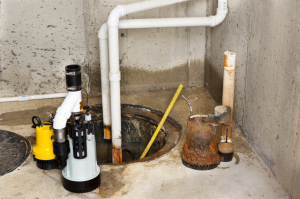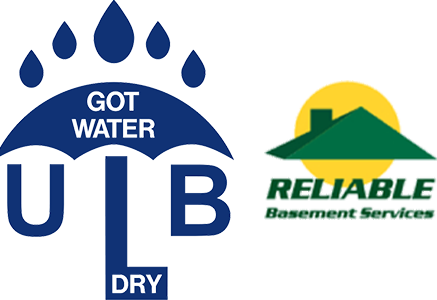Maybe you think of basement waterproofing as a new phenomenon? While your assumption is understandable, the fact of the matter is that basement waterproofing has existed for thousands of years. Though waterproofing technology has certainly progressed since the biblical days, basement waterproofing itself has essentially always been a viable option.
Curious as to how it got to where it is today? Then keep on reading. Below, we’re going to discuss the history of basement waterproofing.
The Early Days of Basement Waterproofing

The first waterproofing entity ever utilized goes back thousands of years, introduced sometime between the BC and AD years. This waterproofing entity was natural bitumen, and it was used as a waterproof coating for basement walls.
While other water removal mechanisms were used during this time, they were not used in basements. For instance, the Egyptians utilized a tool known as a shadoff in order to raise water levels.
For almost 2,000 years, bitumen was the exclusive waterproofing entity in existence. While it didn’t provide protection on the level of many of today’s waterproofing entities, it did help to prevent moisture, mold, and mildew.
19th Century
After the use of natural bitumen, there wasn’t a new development in waterproofing technology until the 19th century. However, once these developments began to arise, they snowballed, and waterproofing technology started to progress much more rapidly.
The first big development in the 19th century was brought on by inventor and agriculturalist Henry French in 1850. French had previously developed drain tile to use in agricultural fields. However, after his cellar flooded, he began experimenting with drain tile as a means of draining basement water.
His innovation was a successful one, and soon, drain tile were being installed in basements throughout the Midwest as well as in the Southern and Northeastern portions of the United States.
20th Century
The 20th century saw the development of all kinds of basement waterproofing entities. With the development of these entities, homeowners were capable of forcefully removing any water that had made its way into their basements.
For instance, the sump pump (as we know it) was invented in 1942. While pumps had existed prior to this pump, they were manually operated and could not pump water automatically. This innovation changed basement waterproofing, and soon, sump pumps were being used in basements all throughout the United States.
By the 1970s, the basement waterproofing industry had become a legitimate industry. Not only were waterproofing entities being mass-manufactured, but waterproofing practices were being regulated by organizations such as The National Association of Waterproofing and Structural Repair.
The result of this? Basement waterproofing became popularized. Soon, homeowners everywhere were opting to waterproof their basements, converting them into inhabitable spaces as opposed to dark storage rooms.
21st Century
Today, the basement waterproofing industry is stronger than ever. Rarely is a basement constructed without the addition of basement waterproofing entities.
Homeowners are opting for a wide variety of basement waterproofing entities, including but not limited to sump pumps, drain tile, waterproofing membranes, glass block windows, and downspout extensions. Property owners are also better educated in the importance of basement waterproofing maintenance, opting to have their foundation cracks repaired on a consistent basis.
In Need of Basement Waterproofing in Winfield?
Are you dealing with water in your basement? Interested in utilizing basement waterproofing services in Winfield, Illinois? If so, ULB-DRY Waterproofing is the company to call.
We’ve installed basement waterproofing entities in countless homes throughout Winfield and its surrounding areas. Regardless of your basement waterproofing needs, we can accommodate you.
Contact us now to discuss your needs!





